
Knowing how to grow lavender, whether in pots or borders, is an essential part of any budding gardener's toolkit.
A vibrant lavender shrub will make for a welcome addition to your garden ideas, bringing with it a delightful perfume that is the perfect partner for pathways or seating areas. Plus lavender is popular with bees, butterflies and other pollinators making it particularly valuable when grown alongside crops.
How to grow lavender
It's surprisingly easy to learn how to grow lavender, as long as you follow a few key steps and understand the specific requirements of this Mediterranean garden favourite.
'Lavender is a generally low-maintenance plant but it is important to remember that it loves the sunshine, so always position in a sunny spot, and benefits from good drainage,' advises Daniel Carruthers, director of sales at Cultivar Greenhouses.
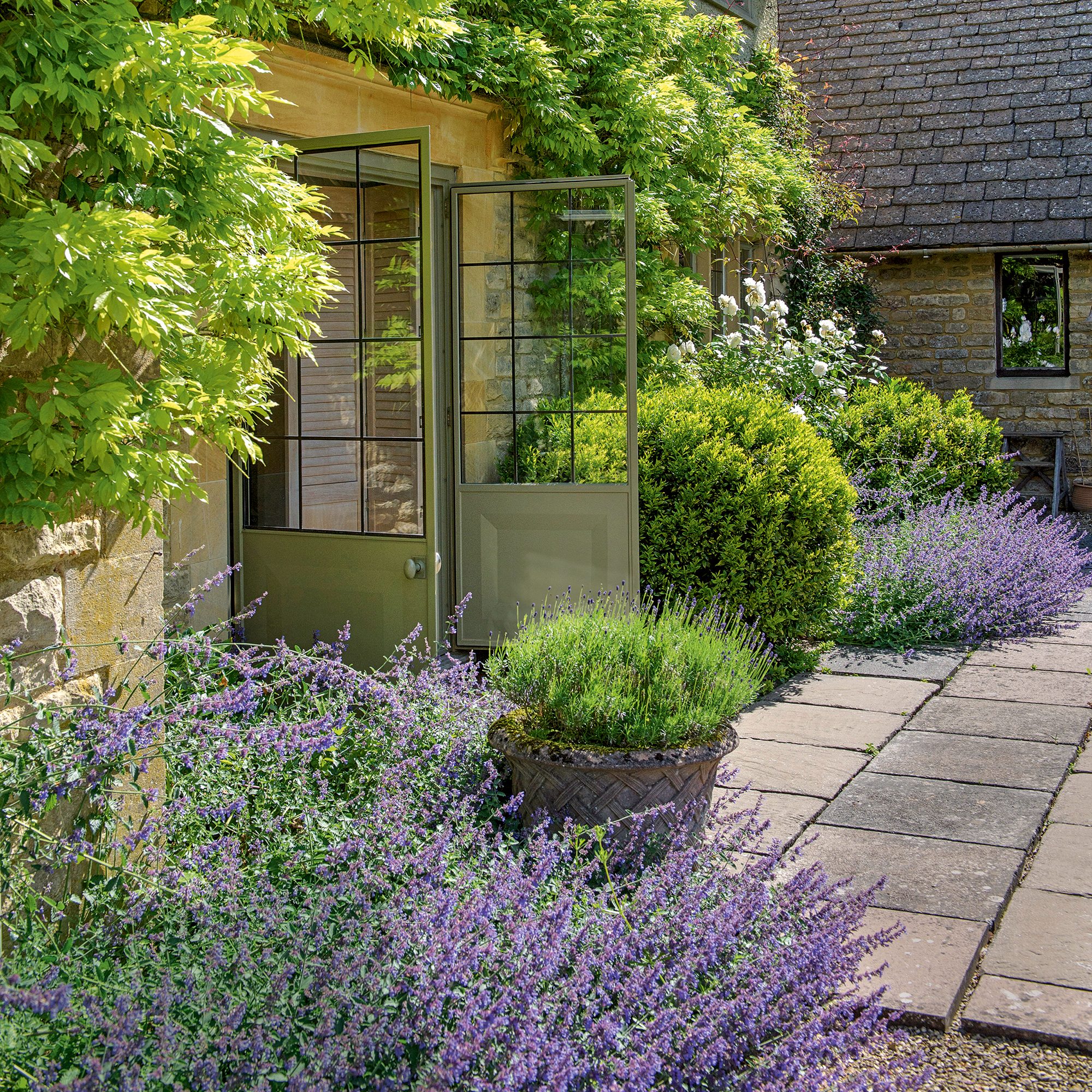
What you'll need
Growing lavender in a border
- Lavender shrub
- Organic matter, like compost or dried leaves
- Watering can
- Spade
Growing lavender in a pot
- Pot – at least 30cm diameter
- Soil, perlite, and coarse sand OR ericaceous compost
- Nursery sized lavender
- Watering can
- Spade
How to grow lavender step-by-step
1. Choose your spot
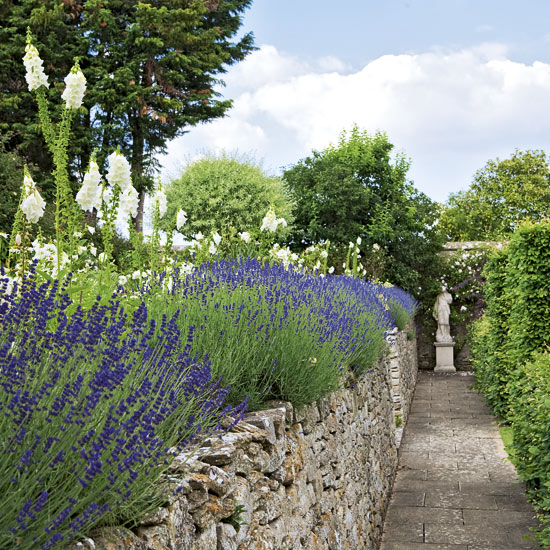
One of the best gardening tips, regardless of the plant, is to ensure your plants are placed in the right spot.
'When learning how to grow lavender, position your plant somewhere where it can enjoy at least six to eight hours of sunshine per day. Too much shade can impact its growth rate and scent,' explains Daniel Carruthers, director of sales at Cultivar Greenhouses. 'The beauty of planting lavender in a pot rather than straight into the earth is that you can move it around to chase the sun if needed.'
When planting directly into the ground, opt for a place that receives full sun for the majority of the day. If you have a shadier garden, find the spot that receives the most daylight and then opt for a more shade-tolerant variety such as French lace lavender (Lavandula multifida).
2. Select the right pot

If learning how to grow lavender in pots, choosing the right pot is vital. Terracotta is a popular option as it promotes good drainage, allowing water to leave through the walls of the pot as well as the base.
'You must also choose the right size pot that will give your lavender enough room to grow – look at the variety you have chosen as it should indicate how big the lavender is likely to grow as there are lots of varieties, from compact through to tall. However, as lavender is classed as a semi-shrub, you will need a large pot, upwards of 30cm in diameter,' says Lucie Bradly co-owner of Two Wests & Elliot Ltd.
3. Prepare the soil
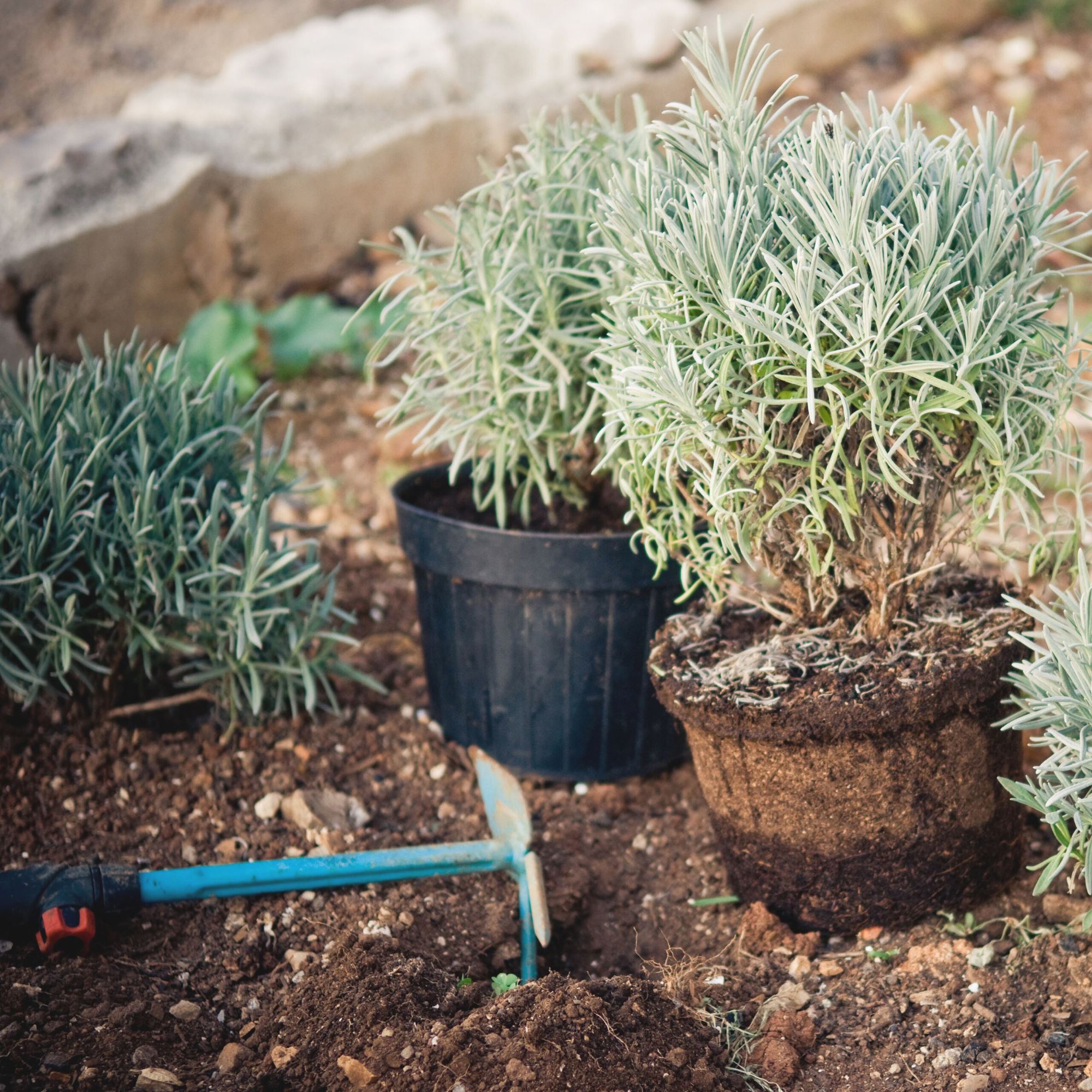
Lavender grows best in free-draining soil. You can improve the drainage of your garden soil by digging in organic matter, like compost or dried leaves.
If you are growing lavender in pots, Lucie Bradly co-owner of Two Wests & Elliot Ltd, advises that you 'prepare a blend of potting soil, perlite, and coarse sand in a ratio of 2:1:1 to ensure proper drainage. Or purchase ericaceous compost as this has been developed to best suit acid-loving plants like lavender.'
4. Remove the nursery pot
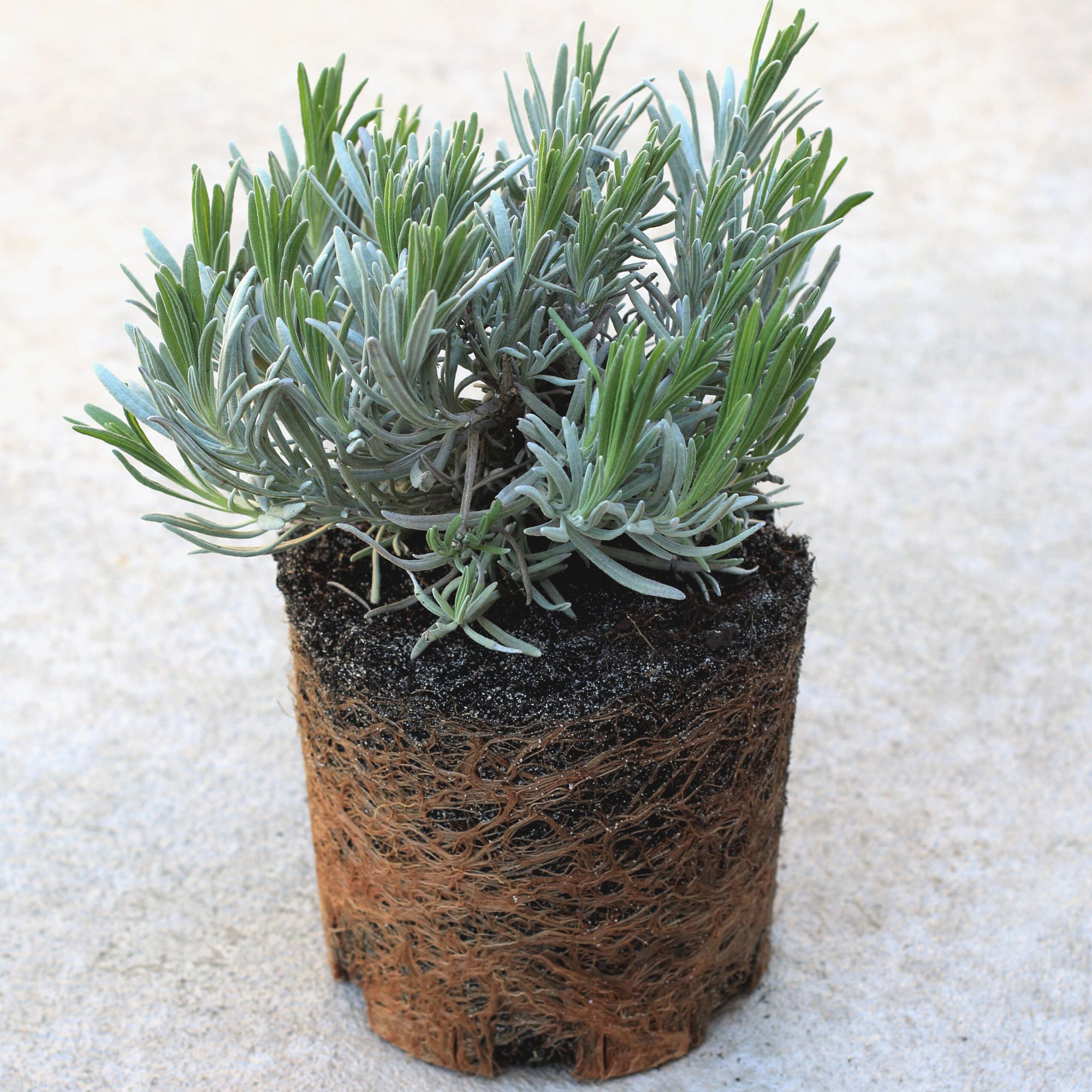
Most lavender plants are sold ready to be planted in the garden – this should be done as soon as possible after purchase. Gently remove the nursery pot by squeezing each side and then tipping it upside down to allow the plant to fall into your hand. Be careful not to damage the stems.
If your lavender plant is root bound – like that above – gently tease the roots outwards so that they can easily spread out into their new environment.
5. Dig a hole
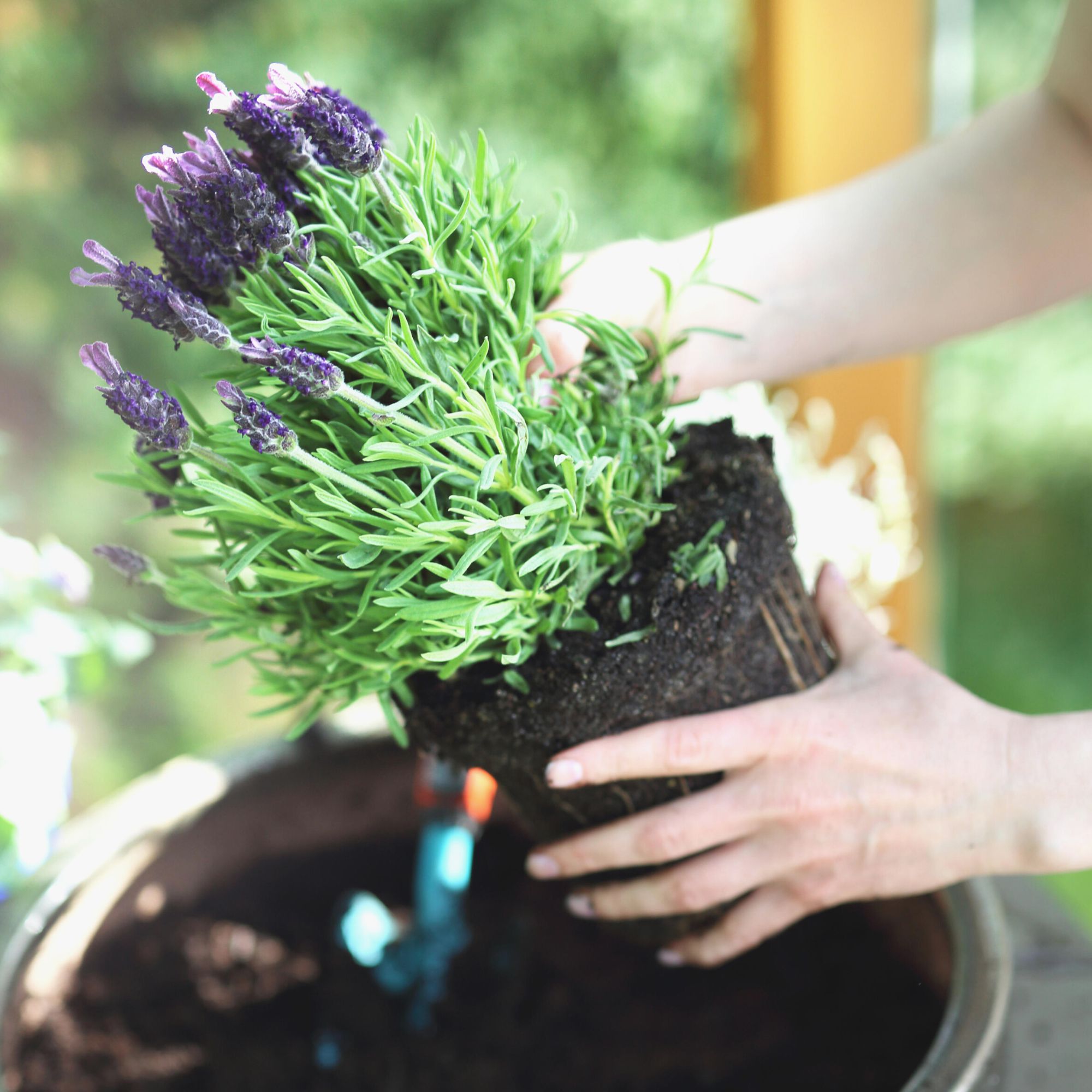
Using your nursery pot for guidance, dig a hole in the ground for your new plant. Then place the lavender plant in its new home and use fresh compost to fill in the hole around the plant, firming in gently as you go.
If you are planting more than one lavender plant ensure that they are positioned around 50cm to 90cm apart to allow room for growth and to prevent competition that can lead to failure.
6. Water thoroughly

Now your lavender is planted, water thoroughly. Water at the base and avoid getting the leaves wet as this can cause damage.
'While lavender is drought resistant, it will still require watering during spring and summer – the frequency of which will depend on the temperature and intensity of sunlight, so it’s worth checking that the top two inches of soil aren’t already damp before watering,' adds Daniel Carruthers, director of sales at Cultivar Greenhouses.
'Potted plants in general require more watering than those in beds or borders, so keep a closer eye on them during warm spells. It is also worth noting that the smaller the pot the quicker compost will dry out.'
7. Feeding
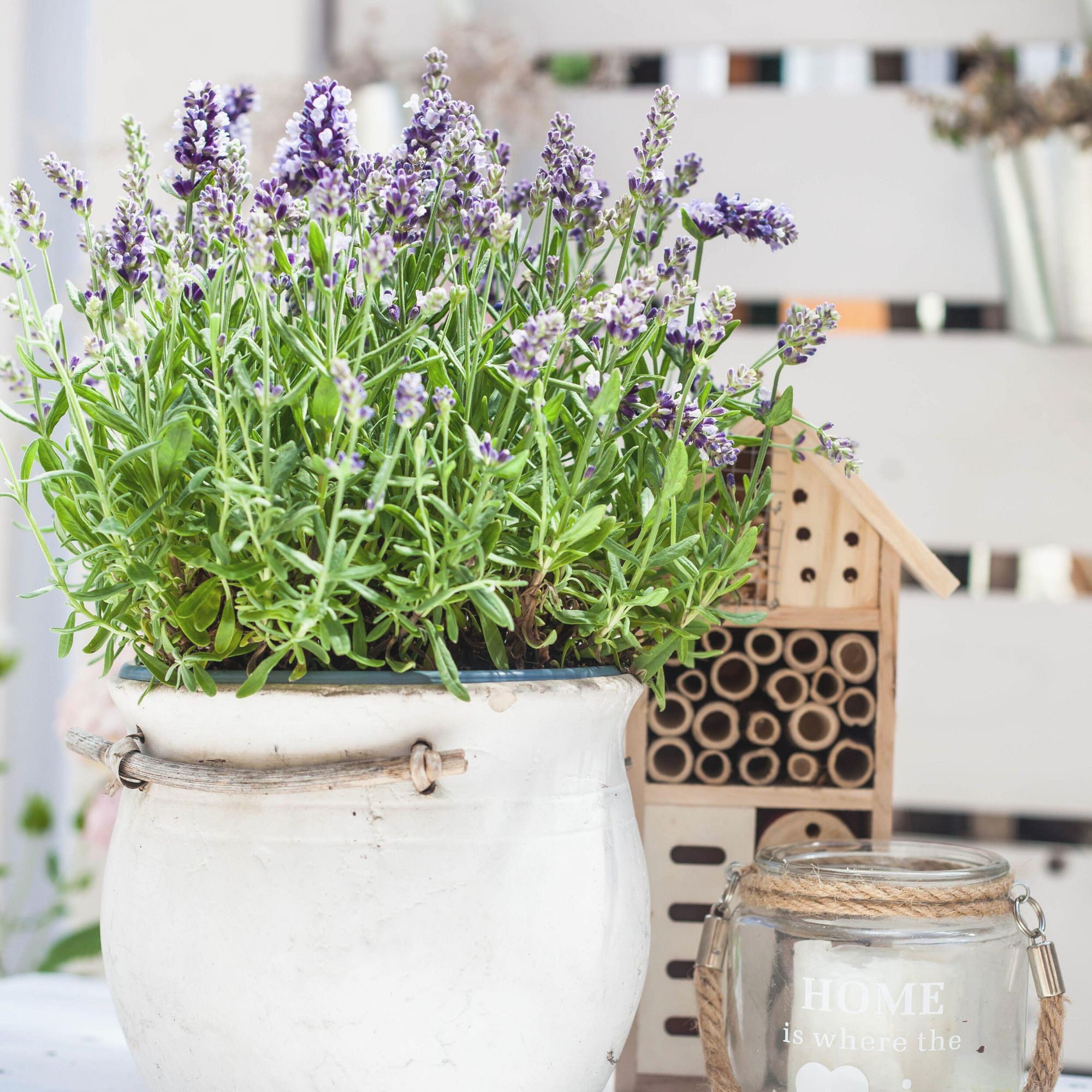
Once you've learnt how to grow lavender, the next step is maintaining it.
'You must be careful not to overfeed your lavender as excess fertiliser could result in lots of foliage growth but no flowers and it could be toxic for the root system,' advises Lucie Bradly, co-owner of Two Wests & Elliot Ltd.
'If growing in the ground you need to feed lavender once a year, while this frequency should be doubled if you are growing it in a pot. Use a low nitrogen, rather alkaline fertiliser – for ease of use adding a slow-release fertiliser into the compost when planting is the best option. The second time you feed should be after the first flowering – as this could result in a second flowering if you are lucky.'
8. Pruning

Whether grown in pots or in the ground, knowing when to cut back lavender is essential – it is one of the jobs to do in the garden in August. It is a key part of learning how to grow lavender.
'Regular pruning helps prevent lavender from becoming woody, encourages a compact, bushy habit and helps to maintain its shape and vigour. Use secateurs or snips from late spring onwards to tidy up the shape and remove any damaged stems. Removing spent flowers along with about 2cm to 3cm of the stem will also encourage further blooming,' advises Lucie Bradly, co-owner of Two Wests & Elliot Ltd.
'It’s important to remember when pruning any plant, that a good, clean cut is best. So always ensure the blades of your secateurs or snips are clean and sharp - this not only makes the task easier, but it also helps to reduce the chance of damage or disease caused by bad trimming.'
Growing FAQs
What can you do with lavender in the winter?
If you live in an area that suffers from cold, wet winters, it doesn't mean you can't learn how to grow lavender. However, in this environment, lavender is best grown in pots as you can move it to protect it.
'Move your pots of lavender into a cold greenhouse or cold frame or at least into a place where it will be sheltered from any excessive rain. If you are concerned about the drop in temperature during the winter months and can’t move the pots then wrap bubble wrap around the pots to keep them warmer - any plants growing in containers are more susceptible to damage from the cold as their roots have less insulation, being in a small space with a limited amount of soil to insulate the roots,' advises Lucie Bradly, co-owner of Two Wests & Elliot Ltd.
If your lavender plant is in the garden, consider covering it with a frost sheet during the coldest parts of winter. However, do not leave it on for the whole season as it can become a breeding ground for disease.
What is the best month to plant lavender?
Lavender is best planted in spring. 'The best time to plant lavender is between March to May – if you have purchased a small plant from a nursery or garden centre, then plant it so that it is at the same depth as it was before,' explains Lucie Bradly, co-owner of Two Wests & Elliot Ltd.







